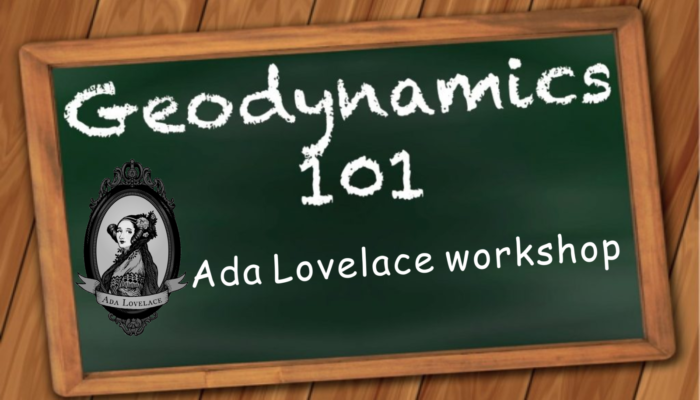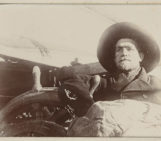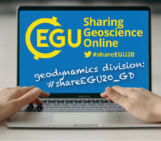
2022 Ada Lovelace Workshop on Numerical Modelling of Mantle and Lithosphere Dynamics is finally coming! Have you got started packing for travelling to Hungary? I got you something to read about on your way to the workshop.
Who is Ada Lovelace?
The workshop, previously known as the ‘International Workshops on Mantle and Lithosphere Dynamics’, was renamed in 2018 by the EGU Topical Events Committee in memory of the 19th century English mathematician and writer Ada Lovelace.
Ada Lovelace was chiefly known for her notes she wrote when translating a French paper introducing the Analytical Engine, a mechanical general-purpose computer proposed by Charles Babbage. In her notes, Ada was the first to recognise that the machine would have applications far beyond mere calculation. She even predicted the machine would have the potential to be programmed to solve problems of any complexity. This was remarkable considering that it was published in 1843, an era way before the idea came true. Ada’s notes on the Analytical Engine, and her insight into what it could do in the future, are why she is known as the first honorary computer scientist.
“Again, it might act upon other things besides number, were objects found whose mutual fundamental relations could be expressed by those of the abstract science of operations, and which should be also susceptible of adaptations to the action of the operating notation and mechanism of the engine. Supposing, for instance, that the fundamental relations of pitched sounds in the science of harmony and of musical composition were susceptible of such expression and adaptations, the engine might compose elaborate and scientific pieces of music of any degree of complexity or extent.” -Ada Lovelace, 1843
A brief review of the past workshops
The “International workshop on Mantle and Lithosphere Dynamics” was initiated in 1987 in Neustadt an der Weinstrasse, Germany. It took place every two years with two pauses in 1999 and 2021. In 2011, the workshop became a part of the European Geosciences Union (EGU) Thematic Meetings Series. During the past 25 years, the workshop has also been held in many other European countries including France, the Netherlands, the Czech Republic, Italy, Switzerland and Norway (Figure 1).
Figure 1. A map review of the past and upcoming workshops on Mantle and Lithosphere Dynamics since 1987. Side figures are taken from the official website for each workshop since 2001.
There is incomplete source of information about the workshops held before 2000. To my best knowledge, the workshops only started to have unique public official websites since the 7th workshop in Aussois, France in 2001 as internet became universal. Ever since, the data of invited talks, session topics and abstracts became much better preserved and searchable online, though it will still take some time to sort things out. Here I have compressed all the 12 abstract booklets since 2001 (with an addition of the 1993 booklet, Figure 2) for anyone who is interested in traveling with the time machine as I did.
 Figure 2. List of booklet covers for some past worshops.
Figure 2. List of booklet covers for some past worshops.
Reading the themed topics and abstracts differs from reading peer-reviewed papers. You can hardly feel about how advanced of a paper when you read it 10 years later, while the workshop booklet will help as the session topics reflect the cutting-edge development of geodynamics in that era. The workshops are chronological nodes that keep good track of the developing edges of geodynamics. Going through them you may gain a better understanding of what efforts the community has paid to lead us to where we are today.
Past workshops in 25 years have witnessed a great improvement of simulation for plate tectonic processes in a variety of temporal and spatial scales. The workshops keep opening new avenues as the geodynamics community consistently incorporates new knowledge from neighbouring disciplines such as geophysics, geochemistry, geology, geodesy, volcanology and computer science.
Official website link of individual workshop & abstract booklets:
1993 2001 2003 2005 2007 2009 2011 2013 2015 2017 2019 2022
12_compressed_abstract_booklets
Objectives of the workshop
The workshop is a well-recognized stage for a detailed, disciplinary discussion on cutting edge topics in geodynamics. It aims at bringing together young scientist and mid-late career researcher to cement and drive the evolution of established fields. The academic background of the participants reflected both the disciplinary and interdisciplinary nature of the workshop. The goals of this conference include:
- Encourage detailed discussion on scientific and technical aspects of geodynamic modelling,
- Introduce students and postdocs in an informal setting to the current challenges of mantle and lithosphere modelling,
- Foster interaction with neighbouring disciplines, e.g., geophysics, geochemistry, geology, geodesy, volcanology and computer science,
- Support international collaboration.
For the early career participants, this workshop will provide a unique opportunity to acquire new information, form a cohort of early career scientists, and encourage future collaboration. The informal set up of the conference and sessions involving in-depth discussion with senior members of the community will also be beneficial for the graduate student and post-doctoral participants.
During the workshop, you are encouraged to ask and receive questions from outside your discipline. Either you are seeking for supporting observational evidence for your model, or the other way around, you have a good chance to get an answer and promote a substantial collaboration. So get ready and enjoy it!
P.S. I am planning to create a Wikipedia page for the “International Workshop on Mantle and Lithosphere Dynamics” during the rest of 2022. So if you are interested in committing to this project, or you have additional abstract booklets, conference photos or any other useful materials for the workshops from 1987 to 1997, I look forward to hearing from you by email (leiz2@cf.ac.uk).
References Menabrea, Luigi Federico; Lovelace, Ada (1843). "Sketch of the Analytical Engine invented by Charles Babbage... with notes by the translator. Translated by Ada Lovelace". In Richard Taylor (ed.). Scientific Memoirs. Vol. 3. London: Richard and John E. Taylor. pp. 666–731.




